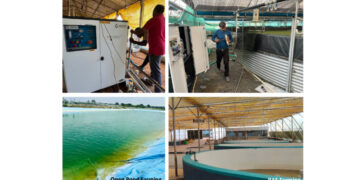Events are transforming from one-time gatherings into continuous experiences shaped by accessibility, personalization, and data-driven insight. The rise of hybrid and virtual formats has redefined how people connect, share knowledge, and build business relationships. No longer confined by physical capacity or geography, events have become dynamic ecosystems where participation is based on choice rather than location.
Hybrid formats are bridging physical and digital participation. They offer attendees the flexibility to join from anywhere while giving organizers the ability to maintain consistency across channels. This shift toward hybrid engagement has made events more inclusive, measurable, and cost-effective.
Technology Driving Scale and Sustainability
Scalability has become the new benchmark for event success. Technology now supports audiences across multiple regions, enabling organizers to expand reach without increasing costs. Verified Market Reports estimates that the Hybrid Event Platform Market, valued at USD 3.19 billion in 2024, will reach USD 9.25 billion by 2033, growing at a compound annual rate of 12.6% between 2026 and 2033. Such growth highlights the increasing reliance on platforms that support large-scale, high-impact events while minimizing environmental footprints.
Sustainability is an added benefit. Virtual participation reduces travel emissions and logistical waste, making events more environmentally responsible. Organizers are also turning to advanced features such as 3D spaces, customizable environments, and AI-based automation to create efficient, immersive experiences. These tools streamline planning and execution while ensuring each event feels distinct and purposeful.
Engagement That Creates Value
Event success depends on interaction quality. Attendance numbers matter less than the level of engagement participants demonstrate. Modern platforms are introducing interactive elements, like live polls, Q&A sessions, and gamified leaderboards, to convert passive viewers into active contributors.
Forrester reports that 64% of organizers are partnering with technology providers to measure insights from virtual events. This indicates how engagement has evolved from being an afterthought to a core design element. Data is now used to refine formats, improve sessions, and build more responsive experiences.
AI matchmaking features further enhance engagement by connecting participants based on interests, goals, and expertise. These curated interactions help participants discover relevant connections and foster meaningful dialogue. Sponsors, too, benefit from targeted networking, which translates into stronger post-event follow-ups and higher conversion potential.
Data as the Foundation of Improvement
The real advantage of virtual and hybrid events lies in analytics. Smart platforms provide real-time visibility into session performance, dwell time, and audience engagement. Organizers can make mid-event adjustments rather than waiting for post-event feedback.
Marketing teams can measure lead quality, sponsors can track booth engagement, and content teams can assess which sessions generate the most interest. This level of insight supports continuous improvement and ensures every event contributes measurable outcomes.
Global conferences have particularly benefited from these capabilities. Organizers now adapt content based on region, time zone, and audience behavior, allowing for a more personalized and inclusive experience.
Hybrid as the Standard Format
Hybrid models are becoming standard practice because they accommodate diverse participation needs. Attendees can join in person or online without compromising experience quality. Unified platforms now integrate content delivery, branding, and feedback systems across both formats, simplifying operations and ensuring consistency.
This structure extends the value of events beyond their live hours. Recordings, on-demand access, and AI-driven recommendations allow attendees to revisit sessions and continue learning long after the event ends. Sponsors gain prolonged visibility, and organizers maintain audience engagement through extended networking opportunities.
By connecting participants beyond the event days, organizers create lasting communities rather than one-off gatherings. Virtual tools support post-event communication, content discovery, and relationship building, extending ROI and strengthening brand association.
Evolving Expectations, Lasting Impact
Event planning has become a continuous cycle of engagement rather than a single execution. Organizations are focusing on measurable outcomes, brand reach, attendee satisfaction, and business leads, rather than headcounts. Virtual and hybrid events have made it possible to achieve these goals with greater precision and less resource waste.
Technology has become the foundation of this progress. AI personalization, scalable delivery, and data transparency are shaping how global engagement is designed and measured. The emphasis is now on quality of experience, accessibility, and sustainability.
Events have evolved into spaces that combine human connection with technological efficiency. They bring together participation, measurement, and impact in ways that physical formats alone could not achieve. As audiences continue to expect flexibility and relevance, hybrid experiences are setting the direction for future engagement, where value is defined not by attendance, but by meaningful interaction and measurable outcomes.


















